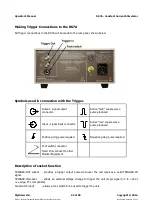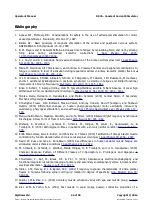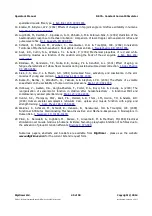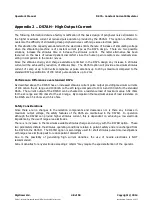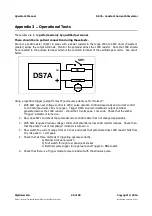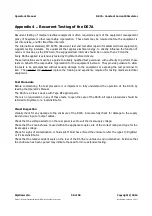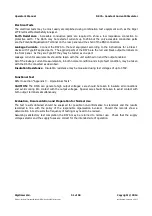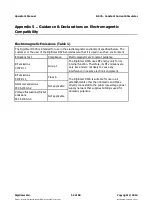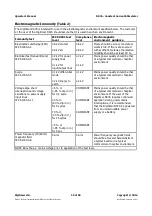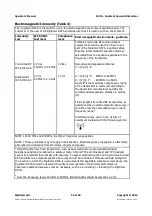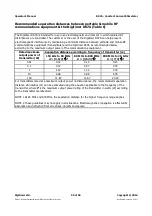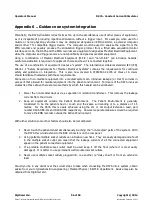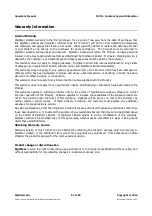
Operator's Manual
DS7A - Constant Current Stimulator
Appendix 6 .. Guidance on system integration
Potentially, the DS7A stimulator relies for its action upon the simultaneous use of other pieces of equipment,
as it is incapable of producing repetitive stimulation without a trigger input. For example, when used for
muscle or nerve physiology studies it may be employed alongside an EMG recorder, a personal computer
and/or other TTL compatible trigger device. The computer would be used to analyse the signal from the
EMG recorder and possibly produce the stimulation trigger protocol from a fitted data acquisition/control
interface card. So, the DS7A and the EMG recorder are equipment designed as Medical Electrical Equipment,
while the computer and trigger source are not specifically designed as medical equipment.
Using a combination of Medical Electrical Equipment (M.E.E.) and “non-M.E.E.” can introduce hazards;
careful consideration is required of equipment choice and how it is connected together.
The use of a combination of equipment creates a “system” The international collateral standard IEC /(EN)
60601-1-1 “Safety Requirements for Medical Electrical Systems” contains the requirements for continued
safety and guidance on integration. This is also now covered in IEC60601-1:2005 at Clause 16. Users
should familarise themselves with these requirements.
Connection of non-medical equipment into a medical system can introduce leakage (or touch) currents in
excess of that allowed for medical equipment into the patient environment. For Users of the DS7A involved
studies like those above there are two methods by which this hazard can be eliminated.
1. Power the non-medical devices via a separation or isolation transformer. This removes the leakage
currents from the circuits.
2. Keep all equipment outside the Patient Environment. The Patient Environment is generally
considered to be the patients bed or couch and the space surrounding it, to a distance of 1.5
metres. For the DS7A this is easily achieved using the 2m or 4m Output Extension Lead, part
number D185-HB4-2m and D185-HB4 respectively. However separate measures would be required
to move the EMG recorder outside the Patient Environment.
With either solution some other factors should also be remembered.
1. Never touch the patient whilst simultaneously touching the “non-medical” parts of the system. With
the DS7A this would extend to the BNC connectors on the rear panel.
2. Using portable multiple socket outlets can introduce new risks. They are easily damaged and a fault
in the multiple socket outlet can mean that the leakage currents of all the connected equipment
appear in the patient connected equipment.
3. If a portable multiple socket outlet must be used keep it off the floor (where it is most easily
damaged). It is better to use permanent wall mounted socket outlets.
4. Never use multiple socket outlets plugged into one another (a “daisy chain” or from an extension
lead.
Should you be in any doubt over the correct steps to take when connecting the DS7A into a system, obtain
advice from your orginisations Bio-engineering / Medical Physics / E.B.M.E. department. Advice may also be
obtained from Digitimer Ltd.
Digitimer Ltd.
56 of 58
Copyright © 2014
File Ref: N:\Docs\Company\Manuals\DS7A\Issue-14\DS7A-iss14.odt
Last Revised: February 1, 2017

